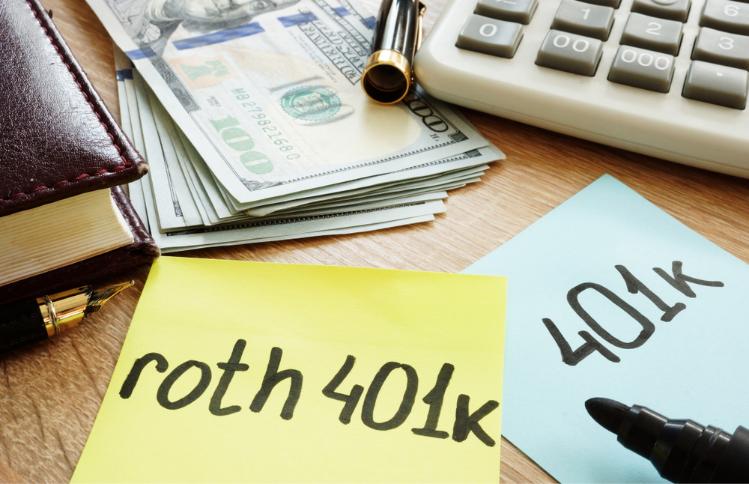The Self-Directed Solo 401(k) plan is so popular because it is designed explicitly for small, owner-only businesses that want control over their retirement funds. A Solo 401(k), also known as an Individual 401(k) or Self-Employed 401(k) plan, is perfect for any sole proprietor, consultant, or independent contractor. To be eligible to benefit from the Solo 401(k) plan, you must meet the two eligibility requirements:
- The presence of self-employment activity.
- The absence of full-time employees.
The business owner and their spouse are technically considered “owner-employees” rather than “employees.” The following types of employees may be generally excluded from coverage:
- Employees under 21 years of age
- Employees who work less than 1,000 hours annually
- Union employees
- Nonresident alien employees
What Type of Business can Setup a Solo 401(k)?
Essentially, any U.S.-based legal business can setup a Solo 401(k). A business is an activity in which a profit motive is present and economic activity is involved. If you are self-employed, then using a Schedule C to report income or expenses will work. Note – if you report rental income on a Schedule E, you will not be deemed to be in business since a Schedule E is for passive real estate or interest income.
Related: Jobs Anyone Can do to Open a Solo 401(k)
All Solo 401(k) Plans are Not the Same
When deciding what type of Solo 401(k) plan is best for you and your business, it is important to look at all the options the plan provides to make sure it will satisfy your retirement planning, tax, and investment goals. Not all Solo 401(k) plan documents are the same.
Most banks and financial institutions, such as Vanguard or Fidelity, offer Solo 401(k) plans. Their plans are typically quite restrictive and only permit the plan participant to make limited equity-type investments without benefiting from most of the available IRS-approved options, such as the tax-free loan and Roth contributions. However, if you do not want to be forced to invest all your hard-earned retirement savings in the stock market, then seeking an open architecture Solo 401(k) plan could prove attractive.
The IRA Financial Solo 401(k) plan is unique and so popular because it is designed explicitly with the retirement saver in mind. Unlike a traditional financial institution plan, the IRA Financial Solo 401(k) plan is open architecture offering you the ability to take advantage of all available plan options, such as Roth contribution options, $50,000 loan feature, checkbook control for alternative assets, and much more. Unlike a traditional financial institution incentivized to restrict investment options and plan features, IRA Financial does not sell investments or give investment advice.
What is a Roth Solo 401(k) Plan?
The Roth Solo 401(k) plan is basically a regular plan with a Roth feature. It combines features of the traditional Solo 401(k) with features of the Roth IRA. A Solo 401(k) plan with a Roth feature allows one to make Roth contributions up to $66,000 or $73,500 if you are at least age 50. Unlike pretax plans, contributions to a Roth Solo 401(k) are not tax-deductible, however, so long as the Roth account is opened at least five years and the plan participant is over the age of 59 ½, all distributions would be tax-free. At age 59 ½, you may be able to live off your Roth Solo 401(k) retirement funds tax-free; or keep investing: take out a portion of your funds for any investment purpose, whether it be business or personal without paying one dollar in tax
The Roth Solo 401(k) Primary Advantage
The Roth solo 401(k) plan is the ultimate tax-free retirement solution for the self-employed. With federal and state income tax rates expected to increase in the future, gaining the ability to generate tax-free returns from your retirement investments when you retire is the last surviving legal tax shelter. You can make almost any investment tax-free, including real estate, tax liens, precious metals, currencies, options, and private business investments. Once you hit the age of 59 ½, you will be able to live off your Roth assets without ever paying taxes.
Imagine if someone told you that if you started making Roth contributions in your forties and by just generating a modest rate of return, you could have over a million dollars tax-free when you retire.
Of course, you won’t receive the upfront tax break a pretax plan offers. But as long as you are patient, you can reap the rewards in the future. Why save taxes on $10,000 in contributions when you can save them on $1 million in earnings!
For example, George, a self-employed real estate agent, who is 30 years began funding a Roth Solo 401(k) plan with $8,000. Assuming he contributed that same amount each year and earned an 8% rate of return, he would have a whopping $2,238,248 by age 70. All that money would be tax-free, which he can live off of, or pass it on to his spouse or children, tax-free!
Conclusion
Not all Solo 401(k) plans are the same! If you want to gain the ability to make Roth contributions, borrow up to $50,000 tax-free, plus invest in alternative assets, then opening a plan at the usual places will not work. The IRA Financial Solo 401(k) plan is open architecture and offers all available plan options for one low fee.
Remember, the only difference between a Roth and a traditional plan is when taxes are paid. If you want the immediate tax break, go with the pretax plan. However, if you want to take advantage of the power of retirement savings fully, utilize the Roth Solo 401(k).










